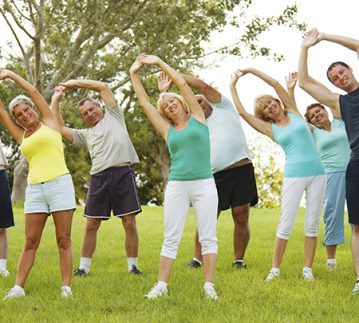 In addition to medical treatments, studies are showing that exercise has neuroprotective and cognitive benefits slowing the progression of the disease.
In addition to medical treatments, studies are showing that exercise has neuroprotective and cognitive benefits slowing the progression of the disease.
The Parkinson’s Outreach Project suggests increasing exercise time to 2.5 hours/week and says that higher intensity and consistent exercise—started earlier in the disease progression—will provide greater benefit. Interventions that provide neuroprotective benefits, such as exercise, could change the course of the disease.
This study showed that low intensity treadmill walking, high intensity treadmill walking, stretching, and resistance training all resulted in improved walking distance in a 6 minute test.
“This study makes it clear that everyone with Parkinson’s disease should be exercising. Patients suffer when they delay starting their exercise, and it doesn’t seem to matter what they do, they benefit from just getting up and moving,” said Michael S. Okun, MD, NPF’s National Medical Director.
Working with a personal trainer who is also a chiropractor will provide the extra knowledge and expertise to design the most effective exercises for Parkinson’s Disease.
Exercise can be helpful in improving or reducing the impact of:
Tremors. A tremor, or shaking, usually begins in a limb, often your hand or fingers. You may notice a back-and-forth rubbing of your thumb and forefinger, known as a pill-rolling tremor. One characteristic of Parkinson’s disease is a tremor of your hand when it is relaxed (at rest).
Slowed movement (bradykinesia). Over time, Parkinson’s disease may reduce your ability to move and slow your movement, making simple tasks difficult and time-consuming. Your steps may become shorter when you walk, or you may find it difficult to get out of a chair. Also, you may drag your feet as you try to walk, making it difficult to move.
Rigid muscles. Muscle stiffness may occur in any part of your body. The stiff muscles can limit your range of motion and cause you pain.
Impaired posture and balance. Your posture may become stooped, or you may have balance problems as a result of Parkinson’s disease.
Loss of automatic movements. In Parkinson’s disease, you may have a decreased ability to perform unconscious movements, including blinking, smiling or swinging your arms when you walk.
Speech changes. You may have speech problems as a result of Parkinson’s disease. You may speak softly, quickly, slur or hesitate before talking. Your speech may be more of a monotone rather than with the usual inflections.
Writing changes. It may become hard to write, and your writing may appear small.
So if you or someone you know has Parkinsons Disease, consider sharing this post with them. We’d love to help design an exercise program for them that will help slow the progression of the disease.